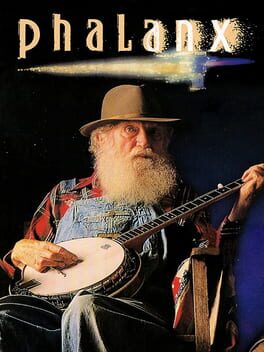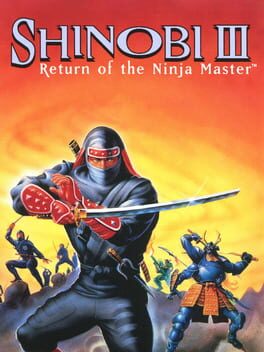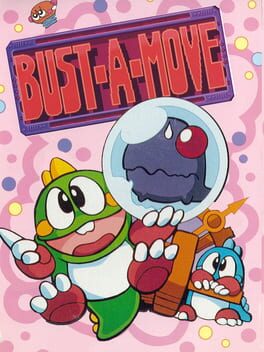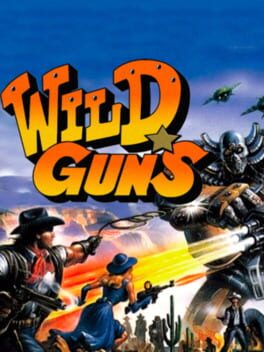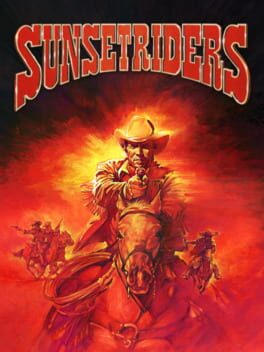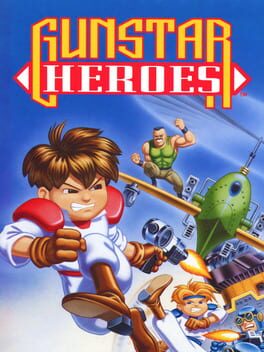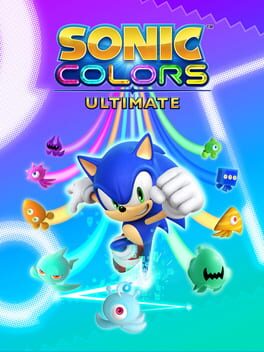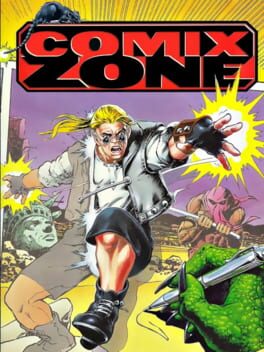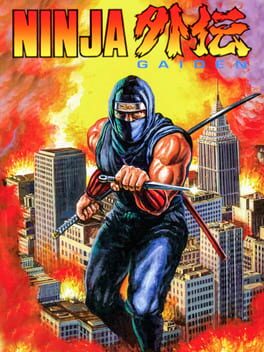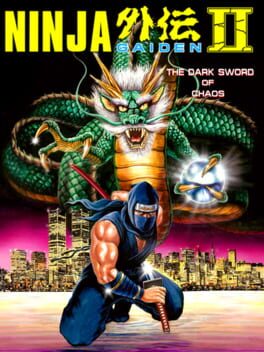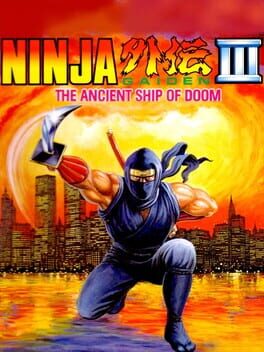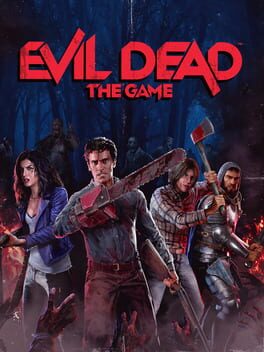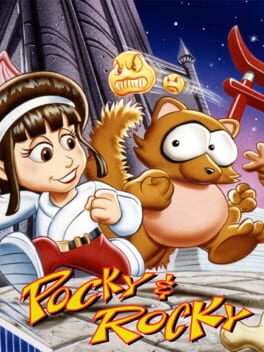1991
Phalanx is a perfectly average SNES shoot-em-up, so utterly unremarkable and lacking in personal identity that they famously had to put a banjo playing grandpa on the cover to catch people's attention. I'll admit, I had no idea what this game even was until just a few years ago, but the cover always stuck in my mind, so mission accomplished!
I barely remember playing this thing. There's just not much going on here to differentiate it mechanically from other shooters, and a lack of memorable set pieces make this game entirely too forgettable. Then again, that also means there was nothing so offensively bad about it either. Graphically it's very nice, and I think the only reason I can recall any of this game at all is because a few of the levels just look really great. Even then, I don't think I'd say it's the top of its class. R-type III is far more aesthetically pleasing and has a more stylized look to it, for example.
I wish I had more to say about this one, but unfortunately the cover and the story behind it is far more interesting than the game itself. Just one of those cases where the one thing people latch onto is really the only thing to latch onto.
I barely remember playing this thing. There's just not much going on here to differentiate it mechanically from other shooters, and a lack of memorable set pieces make this game entirely too forgettable. Then again, that also means there was nothing so offensively bad about it either. Graphically it's very nice, and I think the only reason I can recall any of this game at all is because a few of the levels just look really great. Even then, I don't think I'd say it's the top of its class. R-type III is far more aesthetically pleasing and has a more stylized look to it, for example.
I wish I had more to say about this one, but unfortunately the cover and the story behind it is far more interesting than the game itself. Just one of those cases where the one thing people latch onto is really the only thing to latch onto.
The Revenge of Shinobi is easily my favorite of the Sega Genesis' launch line up, not that the bar was ever set high to begin with. Whereas other launch games like Altered Beast stumble in their attempt to bring the arcade into the home, Shinobi excels by understanding that a console game should be made with the idiosyncrasies of home gaming in mind.
Unlike the original Shinobi, there are no longer multiple hostages to rescue, and Joe Musashi is a fair bit tougher to kill (though the game is still pretty challenging.) A larger emphasis on story further sets it apart, though to be perfectly honest I don't really remember any of it other than your girlfriend being kidnapped. Shoutout to anyone else who also lets her die every single time. Look, it's not that I'm cruel, I'm just bad at video games.
The soundtrack by Yuzo Koshiro is terrific, which should just go without saying. While Koshiro is a well accomplished composer and still produces some incredible music today, his body of work on the Genesis is easily my favorite among his entire catalog. There are tracks in The Revenge of Shinobi that truly deserve to be called "iconic," and if nothing else this game is just damn good to just listen to. Did you know Yuzo Koshiro also created a theme song for Inugami Korone?
Fun Weatherby Fact: I once flooded my apartment because I was watching Korone stream Mario games with my headphones on and didn't hear my washing machine overfill. I'm 34-years-old!
The greatest weakness of Revenge of Shinobi is that it's not Shinobi III: Return of the Ninja Master, a game that accomplishes everything this one does with so much more flourish and polish that it renders Revenge nearly moot. The Revenge of Shinobi's only real value to me today is its role in Sega's history and early success in the 16-bit era, the sort of game you sit down with to appreciate more for its legacy than its gameplay. It is then worth noting that anyone looking to play this game today should put some consideration into which revision they play. It's no secret that a number of copyrighted characters were put in the game as boss fights, supposedly due to some miscommunication between Noriyoshi Ohba and the lead character designer. Each revision makes some change to how these characters appear, with Not Spider-Man in particular eventually just outright becoming Spider-Man due to a licensing agreement between Marvel and Sega. My preference is the original version of the game because it's the most "raw."
Anyway, that's all I have to say about The Revenge of Shinobi. I'm going to lay down now and do some Ninja Magic (DMT), thank you for reading my review!
Unlike the original Shinobi, there are no longer multiple hostages to rescue, and Joe Musashi is a fair bit tougher to kill (though the game is still pretty challenging.) A larger emphasis on story further sets it apart, though to be perfectly honest I don't really remember any of it other than your girlfriend being kidnapped. Shoutout to anyone else who also lets her die every single time. Look, it's not that I'm cruel, I'm just bad at video games.
The soundtrack by Yuzo Koshiro is terrific, which should just go without saying. While Koshiro is a well accomplished composer and still produces some incredible music today, his body of work on the Genesis is easily my favorite among his entire catalog. There are tracks in The Revenge of Shinobi that truly deserve to be called "iconic," and if nothing else this game is just damn good to just listen to. Did you know Yuzo Koshiro also created a theme song for Inugami Korone?
Fun Weatherby Fact: I once flooded my apartment because I was watching Korone stream Mario games with my headphones on and didn't hear my washing machine overfill. I'm 34-years-old!
The greatest weakness of Revenge of Shinobi is that it's not Shinobi III: Return of the Ninja Master, a game that accomplishes everything this one does with so much more flourish and polish that it renders Revenge nearly moot. The Revenge of Shinobi's only real value to me today is its role in Sega's history and early success in the 16-bit era, the sort of game you sit down with to appreciate more for its legacy than its gameplay. It is then worth noting that anyone looking to play this game today should put some consideration into which revision they play. It's no secret that a number of copyrighted characters were put in the game as boss fights, supposedly due to some miscommunication between Noriyoshi Ohba and the lead character designer. Each revision makes some change to how these characters appear, with Not Spider-Man in particular eventually just outright becoming Spider-Man due to a licensing agreement between Marvel and Sega. My preference is the original version of the game because it's the most "raw."
Anyway, that's all I have to say about The Revenge of Shinobi. I'm going to lay down now and do some Ninja Magic (DMT), thank you for reading my review!
Shinobi III: Return of the Ninja Master takes everything predecessor Revenge of Shinboi does and dials it up as far as the Genesis hardware will allow. This is a much more kinectic game, with showier set pieces, level layouts that do a far better job at maintaining the pace and flow of the game, and a somewhat improved control scheme with additional moves designed to keep Joe Musashi moving.
The difficulty curve is also much better in this game. It feels like a more gradual climb, and while it becomes quite challenging by the end of the game, it is never obtusely difficult. The final boss really tests your skills, and there's a number of encounters along the way that pose a threat, but there was never anything that pushed me away from the game.
While I think Yuzo Koshiro's soundtrack for Revenge remains one of its more defining and enjoyable features, I might just prefer III's score that much more. It does a great job of playing to the pace of the game and keeps the player amped up. Aesthetically, III feels like a perfect evolution of Shinobi's design. Levels are much more vibrant and full of life, and do a good job feeling visually distinct.
I haven't played Shadow Dancer, so I really couldn't tell you how Revenge's follow-ups compare against each other. I've heard good things about it, though! Still, Shinobi III is an easy recommendation from me. Definitely give this one a shot, especially if you've played Revenge of Shinobi but somehow slept on its sequels.
The difficulty curve is also much better in this game. It feels like a more gradual climb, and while it becomes quite challenging by the end of the game, it is never obtusely difficult. The final boss really tests your skills, and there's a number of encounters along the way that pose a threat, but there was never anything that pushed me away from the game.
While I think Yuzo Koshiro's soundtrack for Revenge remains one of its more defining and enjoyable features, I might just prefer III's score that much more. It does a great job of playing to the pace of the game and keeps the player amped up. Aesthetically, III feels like a perfect evolution of Shinobi's design. Levels are much more vibrant and full of life, and do a good job feeling visually distinct.
I haven't played Shadow Dancer, so I really couldn't tell you how Revenge's follow-ups compare against each other. I've heard good things about it, though! Still, Shinobi III is an easy recommendation from me. Definitely give this one a shot, especially if you've played Revenge of Shinobi but somehow slept on its sequels.
1994
80 reviews deep and nothing has had me scratching my head quite like Puzzle Bobble (AKA Bust-A-Move.) What can you really say about this thing? It's Puzzle Bobble. Gameplay is pretty barebones. Shoot and connect orbs of a color, chain combos, and clear wells. That's all there really is to it!
And I mean that. This game is bereft of modes and options. Later games in the series have a lot more to bite into (Bust-A-Move 2 for the Saturn, if I'm pulling an example from thin air), but be that as it may, it's undeniably charming for what it is. The sprite work is nice and character designs are adorable, and the soundtrack while not especially lengthy is still full of ear worms.
Puzzle Bobble for the SNES is one of those games I wanna play for maybe ten, fifteen minutes, and then I've had my fill. Far from the most engrossing puzzler on the platform or within its own series, but serves its purpose well for a short playthrough.
And I mean that. This game is bereft of modes and options. Later games in the series have a lot more to bite into (Bust-A-Move 2 for the Saturn, if I'm pulling an example from thin air), but be that as it may, it's undeniably charming for what it is. The sprite work is nice and character designs are adorable, and the soundtrack while not especially lengthy is still full of ear worms.
Puzzle Bobble for the SNES is one of those games I wanna play for maybe ten, fifteen minutes, and then I've had my fill. Far from the most engrossing puzzler on the platform or within its own series, but serves its purpose well for a short playthrough.
1994
Natsume is better known as the publisher of Harvest Moon and Buffy the Vampire Slayer: Wrath of the Darkhul King, but damn do they have some bangers in their catalog. Wild Guns, a behind-the-back gallery shooter, is easily my favorite (to be fair, I haven't played Wild Guns: Reloaded), and it absolutely holds up today.
Much like Shadow the Hedgehog, players are given an arsenal and set loose to cause as much devastation as they can. It's fine, though, as you're completely justified in blowing away the bandits, outlaws, and gigantic cowboy robots that get in your way. The action really never lets up, you're constantly dumping ammo and rolling around like a mad man, chucking grenades and generally causing as much pandemonium as humanly possible on a 16-bit console. The "wild" in Wild Arms isn't just a reference to its wild west setting, but its frenzied action as well.
Vibrantly colored and expressive sprite work really ties it all together. This game absolutely nails the visual style its going for. Cartoony, but rich in detail, with animations that are absolutely perfect. The soundtrack deserves from props too for similarly hitting all the right notes. Wild Guns is a game that looks and sounds every bit as good as it plays. It's damn near the perfect package.
I have no major gripes with Wild Arms, but Reloaded certainly seems like the better version. Again, I haven't played it, but from what I understand it really does seem like the definitive version of this game. I mean, it adds a little wiener dog that you can play as. That alone is already a marked improvement over the original.
You could be a true bandito and find a rom of this game to play, but thankfully Wild Guns is easily accessible today either through the Switch's SNES app or the aforementioned Reloaded version. No matter how you get your hands on it, Wild Guns is a fantastic game and more than deserving of your time.
Much like Shadow the Hedgehog, players are given an arsenal and set loose to cause as much devastation as they can. It's fine, though, as you're completely justified in blowing away the bandits, outlaws, and gigantic cowboy robots that get in your way. The action really never lets up, you're constantly dumping ammo and rolling around like a mad man, chucking grenades and generally causing as much pandemonium as humanly possible on a 16-bit console. The "wild" in Wild Arms isn't just a reference to its wild west setting, but its frenzied action as well.
Vibrantly colored and expressive sprite work really ties it all together. This game absolutely nails the visual style its going for. Cartoony, but rich in detail, with animations that are absolutely perfect. The soundtrack deserves from props too for similarly hitting all the right notes. Wild Guns is a game that looks and sounds every bit as good as it plays. It's damn near the perfect package.
I have no major gripes with Wild Arms, but Reloaded certainly seems like the better version. Again, I haven't played it, but from what I understand it really does seem like the definitive version of this game. I mean, it adds a little wiener dog that you can play as. That alone is already a marked improvement over the original.
You could be a true bandito and find a rom of this game to play, but thankfully Wild Guns is easily accessible today either through the Switch's SNES app or the aforementioned Reloaded version. No matter how you get your hands on it, Wild Guns is a fantastic game and more than deserving of your time.
1991
Perhaps it's only natural given Konami's arcade pedigree that Sunset Riders exudes all the attitude of their 90s brawlers despite being more conventionally defined as a run-and-gunner. The punch, pace, and humor of games like Turtles in Time is every bit as alive in Carson City, making for a really enjoyable experience from start to finish. It's also a bit remarkable how "fair" Sunset Riders is, having one of the smoother difficulty curves in an arcade game that I've ever seen. There are some exceptions, of course, such as boss battles that drag on a bit too long due to high health and frustrating patterns, but it's one of the few gunners (or brawlers for that matter) that I can recommend for a singleplayer run.
The game is just as famous for its sound bites as X-men: The Arcade Game. "Bury me with my money!" might just be more familiar to people than Sunset Riders gameplay by this point. Personally, the girls dancing after the saloon level is my favorite moment in the game, but there's some pretty funny stuff throughout. There's also Chief Scalpem! So you know... not all of it is good.
90s Konami arcade games are always a bit hard for me to talk about due to how similar they all look and play. That isn't necessarily a bad thing, Konami used to put out some damn good games, even if they have a certain derivativeness to them. Like some of their other arcade titles, there was an SNES port of Sunset Riders, though my preference is definitely the arcade version. Sunset Riders is well worth the trouble of setting up MAME for alone, but if that's asking just a bit too much, the SNES version is still perfectly fine and a whole lot of fun.
The game is just as famous for its sound bites as X-men: The Arcade Game. "Bury me with my money!" might just be more familiar to people than Sunset Riders gameplay by this point. Personally, the girls dancing after the saloon level is my favorite moment in the game, but there's some pretty funny stuff throughout. There's also Chief Scalpem! So you know... not all of it is good.
90s Konami arcade games are always a bit hard for me to talk about due to how similar they all look and play. That isn't necessarily a bad thing, Konami used to put out some damn good games, even if they have a certain derivativeness to them. Like some of their other arcade titles, there was an SNES port of Sunset Riders, though my preference is definitely the arcade version. Sunset Riders is well worth the trouble of setting up MAME for alone, but if that's asking just a bit too much, the SNES version is still perfectly fine and a whole lot of fun.
1993
Yeah yeah yeah yeah yeah, I get it. People LOVE Gunstar Heroes. One of the best games on the Genesis, they say. Treasure's finest, even! Well guess what? I don't care much for it! That's right, applaud me. Applaud me for my bravery!
Gunstar Heroes is fine. I personally find it to be a pretty average run-and-gunner with some solid mechanics, good controls, and some really fun set pieces. However, it's my least favorite game by Treasure on the genesis. I find Alien Solider to be a lot more mechanically engaging, and when it comes to humor and style Dynamite Headdy has this game beat. Even when compared to other run-and-guns on the system, Gunstar is far from my first choice. And yet, the way people talk about this game you'd think it's the second coming.
For years I've seen this game talked up but never quite found the time to get around to it. This was probably to my detriment, as Gunstar Heroes continued to gestate in my mind, growing in power until it reached almost mythical levels of hype. Of course it couldn't live up to my expectations, and that's not really the game's fault, but after hearing for so long that this was the Sega Genesis game, it's hard to not feel disappointed when it doesn't even stack up to the rest of Treasure's output.
That is also why I think this game deserves a revisit (if I can ever get around to it.) Perhaps I'd like it more now that the illusion has been shattered. I can enjoy it for what it is and not what it was built up to be. Who knows, maybe one more run might be all it takes to tip me over and make me join the ranks of the converted.
Gunstar Heroes is fine. I personally find it to be a pretty average run-and-gunner with some solid mechanics, good controls, and some really fun set pieces. However, it's my least favorite game by Treasure on the genesis. I find Alien Solider to be a lot more mechanically engaging, and when it comes to humor and style Dynamite Headdy has this game beat. Even when compared to other run-and-guns on the system, Gunstar is far from my first choice. And yet, the way people talk about this game you'd think it's the second coming.
For years I've seen this game talked up but never quite found the time to get around to it. This was probably to my detriment, as Gunstar Heroes continued to gestate in my mind, growing in power until it reached almost mythical levels of hype. Of course it couldn't live up to my expectations, and that's not really the game's fault, but after hearing for so long that this was the Sega Genesis game, it's hard to not feel disappointed when it doesn't even stack up to the rest of Treasure's output.
That is also why I think this game deserves a revisit (if I can ever get around to it.) Perhaps I'd like it more now that the illusion has been shattered. I can enjoy it for what it is and not what it was built up to be. Who knows, maybe one more run might be all it takes to tip me over and make me join the ranks of the converted.
1995
Before I burn all good will and am exiled from this site as a pariah for my review of Gunstar Heroes, allow me to just say Alien Soldier is really good. Great even! See, we can be friends!
Alien Soldier's tagline ("VISUALSHOCK! SPEEDSHOCK! SOUNDSHOCK! NOW IS TIME TO THE 68000 HEART ON FIRE!") perfectly sets up this intense late-generation Genesis game by Treasure, creators of the critically acclaimed Dynamite Headdy, and Gunstar Heroes, which some would describe as being "perfectly average." The main attraction here is the bosses, with run-and-gun action stages acting as more of a brief interlude than anything else. In a sense, it's a lot like Cuphead. Bosses are big and showy and often associated with a fun setpiece to really amp up the encounter. Figuring them out requires some trial and error, and when you finally figure out their patterns and master the rhythm of battle, it feels very satisfying taking them down. Some late game bosses get especially brutal (I'd like to draw attention to Seven Force, who is a fiend and a bastard), but the difficulty is well managed through most of the game.
There's a decent amount of weapons and skills at your disposal, and you'll need to get real familiar with them. Thankfully, Treasure did not overload the game with superfluous abilities or power ups, which gives Alien Soldier a more focused feel and allows the player to adapt and learn the game without getting too bogged down. This is especially good as you're going to constantly be in combat against very aggressive foes, which doesn't give you much wiggle room to experiment.
The presentation of this game is top notch, which almost goes without saying for Treasure. Character designs are especially great, with some truly grotesque looking enemies and inventive boss designs. While I think I like the overall aesthetic of Dynamite Headdy more, Alien Soldier goes a long way to show off the strength of Treasure's design staff.
While not a commentary on the game itself, I also want to draw attention to the walkthroughs up on GameFaQs. They're great not because they're super informative, but because they're both great examples of the author's voice not just shining through but becoming all-encompassing. At the risk of veering off into a tangent, I really miss old game walkthroughs. The amount of snark, color commentary, and lore theorizing that would be casually dropped in them is something that's completely absent from modern guides.
Alien Soldier was only available stateside through the Sega Channel back in 95, which means not a lot of people played it back in the day. Thankfully it's available through the Switch's Genesis app, but that requires paying an exorbitant fee for their ~expansion pass~, and I think that's highway robbery. But as I've advocated many times in the past, you can always download a ROM.
Alien Soldier's tagline ("VISUALSHOCK! SPEEDSHOCK! SOUNDSHOCK! NOW IS TIME TO THE 68000 HEART ON FIRE!") perfectly sets up this intense late-generation Genesis game by Treasure, creators of the critically acclaimed Dynamite Headdy, and Gunstar Heroes, which some would describe as being "perfectly average." The main attraction here is the bosses, with run-and-gun action stages acting as more of a brief interlude than anything else. In a sense, it's a lot like Cuphead. Bosses are big and showy and often associated with a fun setpiece to really amp up the encounter. Figuring them out requires some trial and error, and when you finally figure out their patterns and master the rhythm of battle, it feels very satisfying taking them down. Some late game bosses get especially brutal (I'd like to draw attention to Seven Force, who is a fiend and a bastard), but the difficulty is well managed through most of the game.
There's a decent amount of weapons and skills at your disposal, and you'll need to get real familiar with them. Thankfully, Treasure did not overload the game with superfluous abilities or power ups, which gives Alien Soldier a more focused feel and allows the player to adapt and learn the game without getting too bogged down. This is especially good as you're going to constantly be in combat against very aggressive foes, which doesn't give you much wiggle room to experiment.
The presentation of this game is top notch, which almost goes without saying for Treasure. Character designs are especially great, with some truly grotesque looking enemies and inventive boss designs. While I think I like the overall aesthetic of Dynamite Headdy more, Alien Soldier goes a long way to show off the strength of Treasure's design staff.
While not a commentary on the game itself, I also want to draw attention to the walkthroughs up on GameFaQs. They're great not because they're super informative, but because they're both great examples of the author's voice not just shining through but becoming all-encompassing. At the risk of veering off into a tangent, I really miss old game walkthroughs. The amount of snark, color commentary, and lore theorizing that would be casually dropped in them is something that's completely absent from modern guides.
Alien Soldier was only available stateside through the Sega Channel back in 95, which means not a lot of people played it back in the day. Thankfully it's available through the Switch's Genesis app, but that requires paying an exorbitant fee for their ~expansion pass~, and I think that's highway robbery. But as I've advocated many times in the past, you can always download a ROM.
Sonic Colors is one of the extremely rare cases of Sonic Team listening to feedback, implementing changes, and executing with enough skill and creativity to actually create a good video game. This has happened enough times since Sonic made the leap into 3D that I can safely count each instance on one hand, and all but two of my fingers were blown off in Nam.
Sonic Unleashed's division between good and bad is ever so slightly skewed towards "suckass garbage shit" that it's pretty easy to write the game off. Those day time stages, though, were touching on something interesting. Sonic Colors' gameplay focuses primarily on the parts of Unleashed that worked and completely does away with an element that had become a staple of the 3D series up to this point: different characters with divergent gameplay styles. Some people may not like that you can't play as Tails or Knuckles or Shadow or any of Sonic's dozens of friends, but Sonic Team focusing on doing one thing well is exactly what the series needed to finally find its footing in 3D.
The game is divided into six worlds with six acts each, culminating in a boss battle per world. Levels are mostly non-linear, some with more than one goal ring, and designed with such consideration for new and returning moves and power-ups that replays always offer something new. Colors also introduces Wisps, alien power-ups that act as this game's central gimmick (since all Sonic games apparently need one.) Whereas the shooting, racing, or brawling of past games often act as a detriment to the overall experience, Wisps are generally pretty fun to use and are woven in with the core gameplay such that they never break the flow. As you progress further into the game you unlock additional Wisps that can then be used in past stages, which in turn opens up whole new routes. It adds a lot of replay value.
Boss fights are one area where the game feels particularly weak. Each world ends with a boss fight, but really there's only three excluding the final boss. Halfway through the game the bosses repeat, and while these rematches are harder, they never innovate in a significant enough way to be interesting. Wisps are also not used to any creative or significant effect in boss fights outside of dealing increased damage.
While I find bosses to be the weakest part of the game, I'm sure plenty of people would argue that the story is much worse. Personally, I'm fine with it. People seem to take issue with the fact that it lacks any edge and is too focused on goofball antics to be compelling, and I suppose that's a fair criticism, but the series has been so tonally inconsistent that I remain unphased by Colors' strictly comedic narrative. I'm a true Sonic centrist and largely prefer the tone of Unleashed's story, which finds a good balance between setting stakes and poking fun of itself, and while this is very much not that I find it hard to join everyone else in frothing at the mouth.
This is also a review of the Ultimate version of the game, which is an upgraded port of the Wii original that boasts some graphical and mechanical improvements. It's certainly nice to play this game again with a proper controller, and the improved scenery looks pretty damn good. Having the game run at 60fps is another great selling point, though it is worth noting that this screws with the timing of some things. In particular, one boss has become agonizing to S-rank due to moving at double speed, and it's bewildering to me they haven't fixed this yet when there's a whole trophy dedicated to beating it a certain way. Some bizarre lag in the menus and a noticeable delay in selecting "restart" or "exit" while paused round out my technical issues. There were a lot more problems at launch, but by the time I got to it, it seems most have been ironed out. The Wii version still feels like the least buggy between the two, so there's pros and cons to whichever you play.
It's a shame that after finding their footing with Colors, Sonic Team almost immediately went back to being a crap factory. I could write a tome on why I think the current stewards of the franchise are completely unfit, incompetent, and oblivious, but I also can't deny that they're occasionally capable of putting out a genuinely good game. Colors remains a series high point, and is so fun that it's easy for me to overlook some of the shortcomings of this port.
Sonic Unleashed's division between good and bad is ever so slightly skewed towards "suckass garbage shit" that it's pretty easy to write the game off. Those day time stages, though, were touching on something interesting. Sonic Colors' gameplay focuses primarily on the parts of Unleashed that worked and completely does away with an element that had become a staple of the 3D series up to this point: different characters with divergent gameplay styles. Some people may not like that you can't play as Tails or Knuckles or Shadow or any of Sonic's dozens of friends, but Sonic Team focusing on doing one thing well is exactly what the series needed to finally find its footing in 3D.
The game is divided into six worlds with six acts each, culminating in a boss battle per world. Levels are mostly non-linear, some with more than one goal ring, and designed with such consideration for new and returning moves and power-ups that replays always offer something new. Colors also introduces Wisps, alien power-ups that act as this game's central gimmick (since all Sonic games apparently need one.) Whereas the shooting, racing, or brawling of past games often act as a detriment to the overall experience, Wisps are generally pretty fun to use and are woven in with the core gameplay such that they never break the flow. As you progress further into the game you unlock additional Wisps that can then be used in past stages, which in turn opens up whole new routes. It adds a lot of replay value.
Boss fights are one area where the game feels particularly weak. Each world ends with a boss fight, but really there's only three excluding the final boss. Halfway through the game the bosses repeat, and while these rematches are harder, they never innovate in a significant enough way to be interesting. Wisps are also not used to any creative or significant effect in boss fights outside of dealing increased damage.
While I find bosses to be the weakest part of the game, I'm sure plenty of people would argue that the story is much worse. Personally, I'm fine with it. People seem to take issue with the fact that it lacks any edge and is too focused on goofball antics to be compelling, and I suppose that's a fair criticism, but the series has been so tonally inconsistent that I remain unphased by Colors' strictly comedic narrative. I'm a true Sonic centrist and largely prefer the tone of Unleashed's story, which finds a good balance between setting stakes and poking fun of itself, and while this is very much not that I find it hard to join everyone else in frothing at the mouth.
This is also a review of the Ultimate version of the game, which is an upgraded port of the Wii original that boasts some graphical and mechanical improvements. It's certainly nice to play this game again with a proper controller, and the improved scenery looks pretty damn good. Having the game run at 60fps is another great selling point, though it is worth noting that this screws with the timing of some things. In particular, one boss has become agonizing to S-rank due to moving at double speed, and it's bewildering to me they haven't fixed this yet when there's a whole trophy dedicated to beating it a certain way. Some bizarre lag in the menus and a noticeable delay in selecting "restart" or "exit" while paused round out my technical issues. There were a lot more problems at launch, but by the time I got to it, it seems most have been ironed out. The Wii version still feels like the least buggy between the two, so there's pros and cons to whichever you play.
It's a shame that after finding their footing with Colors, Sonic Team almost immediately went back to being a crap factory. I could write a tome on why I think the current stewards of the franchise are completely unfit, incompetent, and oblivious, but I also can't deny that they're occasionally capable of putting out a genuinely good game. Colors remains a series high point, and is so fun that it's easy for me to overlook some of the shortcomings of this port.
1995
Comix Zone is one of those late era Genesis games that came packed inside a cardboard box (the bane of any CIB Genesis collector) and relied more upon its uniqueness than it did the quality of its gameplay. It occupies that same space in my mind that Vectorman does - all style but very little substance, though Comix Zone takes things a bit further with some odd gameplay choices and jankiness.
You play as Sketch Turner, a comic book artist with the most on-the-nose name a character like him could possibly have. One night he gets sucked into the comic he's drawing and has to find a way out, because this is a mid-90s underground comic and that means it's a total nightmare world. Each level sees Sketch bouncing between panels (this game's way of segmenting areas of gameplay as screens) and pages, solving very rudimentary puzzles and getting into fist fights with enemies. Visually it's great. Animations looks terrific for the Genesis, and the game perfectly captures the "tude" of 1995 comic books. Dialog appears, appropriately, in speech bubbles, and striking enemies and obstacles makes sound effects pop up on screen. STI really leaned into the comic book aesthetic here and it's easily the game's strongest suit.
That's because the gameplay is at its best moments unremarkable and at its worst downright messy. I play video games to relax, to escape from the real world and get out of my own head for a little while. After a long day of punching walls and grating and utterly destroying my hands, the last thing I want to do is play a game where I take damage by wailing on doors. I don't like to bring my work home with me, Sega!
I always struggled to get very far in Comix Zone as a kid due to how bad Sketch's jump feels and the level of precision that's sometimes involved with needing to platform your way through a screen. He just has a certain weightiness to him that makes everything feel kinda bad. Combat, jumping, picking up items... Nothing feels as good as it ought to. The game is also incredibly short, and while it's somewhat non-linear, it won't take you very long at all to see everything Comix Zone has to offer. At least if you want to revisit it today you don't have to commit to its poor overall feel for very long.
It's that short play time and its overall uniqueness that I think make it worth playing today. Late era Genesis games tried to be attention grabbers, for better or worse. It meant you had a lot of games that tried to push the boundaries of what the system could do visually, but too often that ambition came at the cost of making these games fun. While Comix Zone is pretty illustrative of this, there isn't anything else out there attempting to be what it is, and I think that alone gives it some worth.
You play as Sketch Turner, a comic book artist with the most on-the-nose name a character like him could possibly have. One night he gets sucked into the comic he's drawing and has to find a way out, because this is a mid-90s underground comic and that means it's a total nightmare world. Each level sees Sketch bouncing between panels (this game's way of segmenting areas of gameplay as screens) and pages, solving very rudimentary puzzles and getting into fist fights with enemies. Visually it's great. Animations looks terrific for the Genesis, and the game perfectly captures the "tude" of 1995 comic books. Dialog appears, appropriately, in speech bubbles, and striking enemies and obstacles makes sound effects pop up on screen. STI really leaned into the comic book aesthetic here and it's easily the game's strongest suit.
That's because the gameplay is at its best moments unremarkable and at its worst downright messy. I play video games to relax, to escape from the real world and get out of my own head for a little while. After a long day of punching walls and grating and utterly destroying my hands, the last thing I want to do is play a game where I take damage by wailing on doors. I don't like to bring my work home with me, Sega!
I always struggled to get very far in Comix Zone as a kid due to how bad Sketch's jump feels and the level of precision that's sometimes involved with needing to platform your way through a screen. He just has a certain weightiness to him that makes everything feel kinda bad. Combat, jumping, picking up items... Nothing feels as good as it ought to. The game is also incredibly short, and while it's somewhat non-linear, it won't take you very long at all to see everything Comix Zone has to offer. At least if you want to revisit it today you don't have to commit to its poor overall feel for very long.
It's that short play time and its overall uniqueness that I think make it worth playing today. Late era Genesis games tried to be attention grabbers, for better or worse. It meant you had a lot of games that tried to push the boundaries of what the system could do visually, but too often that ambition came at the cost of making these games fun. While Comix Zone is pretty illustrative of this, there isn't anything else out there attempting to be what it is, and I think that alone gives it some worth.
1988
My love for NES action-platformers is no secret, and anyone who has followed me for really any length of time should already have me pegged as a Ninja Gaiden fan. It may then be a bit surprising that I only played it for the first time just a few years ago, sitting on it for years after the Castlevania series turned me on to the genre.
Platforming is as precise as I like it, with controls that are so tightly designed every input feels like a full body commitment to the outcome. Power-ups have specific use cases, and finding the balance of when to use one and when to abstain feels every bit as good as developing mastery over the subweapons in Castlevania. Repeat playthroughs feel more and more rewarding as you build your skill and familiarity with the game. It's a game made just for me, so much so that I wound up playing all three NES Ninja Gaidens back-to-back, completely forgetting to feed myself in the process. Having to drag your ass to a McDonalds at 3am because you were too caught up playing video games is just a sign that you're having a good time (or that you're possibly negligent about your personal health and well being. Either or!)
It's not a perfect game, however. Much like other games of its ilk the difficulty spikes harshly, though in this case it occurs in the last third of the game, and bosses become so frustrating that I wouldn't blame you for falling back on save states. The wall jumping gimmick is also a little hit-or-miss. Definitely ironed out in the sequels, but somewhat janky here. There's some sloppy enemy placements as well, and the level design is overall a bit less intentioned than Castlevania.
It's a surprisingly cinematic game, too. This was very much an era where a game's narrative was relegated to the first few pages of the manual and almost entirely superfluous to the actual software, but Ninja Gaiden takes pride in its story. It's campy as all hell, blending elements of espionage thrillers and Tokusatsu. Ninjas fighting against ancient magic, other worldly demonic entities, and the CIA... It's dumb as hell and shockingly complex for what it is, and I love it. It helps that the cutscenes look as impressive as they do, with the shot of Ryu looking out towards Jaquio's temple being a particular stand out.
Ninja Gaiden and its two NES sequels were remade and packed together on one cart for the SNES, so if you want to give this game a shot on better hardware, it might be worth checking that out. Either way, Ninja Gaiden definitely earns its legacy and should not be slept on by any fan of the genre.
Platforming is as precise as I like it, with controls that are so tightly designed every input feels like a full body commitment to the outcome. Power-ups have specific use cases, and finding the balance of when to use one and when to abstain feels every bit as good as developing mastery over the subweapons in Castlevania. Repeat playthroughs feel more and more rewarding as you build your skill and familiarity with the game. It's a game made just for me, so much so that I wound up playing all three NES Ninja Gaidens back-to-back, completely forgetting to feed myself in the process. Having to drag your ass to a McDonalds at 3am because you were too caught up playing video games is just a sign that you're having a good time (or that you're possibly negligent about your personal health and well being. Either or!)
It's not a perfect game, however. Much like other games of its ilk the difficulty spikes harshly, though in this case it occurs in the last third of the game, and bosses become so frustrating that I wouldn't blame you for falling back on save states. The wall jumping gimmick is also a little hit-or-miss. Definitely ironed out in the sequels, but somewhat janky here. There's some sloppy enemy placements as well, and the level design is overall a bit less intentioned than Castlevania.
It's a surprisingly cinematic game, too. This was very much an era where a game's narrative was relegated to the first few pages of the manual and almost entirely superfluous to the actual software, but Ninja Gaiden takes pride in its story. It's campy as all hell, blending elements of espionage thrillers and Tokusatsu. Ninjas fighting against ancient magic, other worldly demonic entities, and the CIA... It's dumb as hell and shockingly complex for what it is, and I love it. It helps that the cutscenes look as impressive as they do, with the shot of Ryu looking out towards Jaquio's temple being a particular stand out.
Ninja Gaiden and its two NES sequels were remade and packed together on one cart for the SNES, so if you want to give this game a shot on better hardware, it might be worth checking that out. Either way, Ninja Gaiden definitely earns its legacy and should not be slept on by any fan of the genre.
Ninja Gaiden II: The Dark Sword of Chaos is everything the original Ninja Gaiden set out to be but more. A wilder story, more unique Ninja powers, more level and enemy variety, but also all the issues of the first game mixed in and amplified. It makes for a much more mixed experience, one that feels like it's taking a step forward from the first game while firming rooting a foot two steps back.
Bad enemy placement and clumsy level design is more pronounced here than it was in the first game, and some of the newly introduced level gimmicks are just atrocious. Trying to navigate Ryu through a level where wind currents can push him towards and away from platforms would be difficult to manage as it is, but throw in some abysmal enemy spawns and you've essentially created a torture device disguised as a game.
Ninja Gaiden II is all around much harder than the first. The difficulty kicks up rapidly, and the final boss fight is not only an intense three phase gauntlet, but one that sends you completely back to the start of the level if you die, which you almost certainly will. The developers apparently account for this because they do throw you a bone: each time you get back to the boss it starts on whatever phase you progressed to last. That's... considerate, I guess? I think it would've been better if they dropped a health item between phases considering each one is already incredibly tough, but it's better than sending you back and starting you out at phase 1, so that's nice. Thank you, Tecmo!
Yet, despite my grievances, it's more Ninja Gaiden, and I'm gonna keep playing this crap. There's still plenty of moments where the game feels just as good as the first, even if it is overall a more uneven experience. Definitely not my favorite in the series and one I tend to skip over when I replay these games, but I can't find it within me to say it's a bad game.
Bad enemy placement and clumsy level design is more pronounced here than it was in the first game, and some of the newly introduced level gimmicks are just atrocious. Trying to navigate Ryu through a level where wind currents can push him towards and away from platforms would be difficult to manage as it is, but throw in some abysmal enemy spawns and you've essentially created a torture device disguised as a game.
Ninja Gaiden II is all around much harder than the first. The difficulty kicks up rapidly, and the final boss fight is not only an intense three phase gauntlet, but one that sends you completely back to the start of the level if you die, which you almost certainly will. The developers apparently account for this because they do throw you a bone: each time you get back to the boss it starts on whatever phase you progressed to last. That's... considerate, I guess? I think it would've been better if they dropped a health item between phases considering each one is already incredibly tough, but it's better than sending you back and starting you out at phase 1, so that's nice. Thank you, Tecmo!
Yet, despite my grievances, it's more Ninja Gaiden, and I'm gonna keep playing this crap. There's still plenty of moments where the game feels just as good as the first, even if it is overall a more uneven experience. Definitely not my favorite in the series and one I tend to skip over when I replay these games, but I can't find it within me to say it's a bad game.
Rounding out the NES Ninja Gaiden trilogy is The Ancient Ship of Doom, the best game in the series according to me, a guy who bought and platinumed Balan Wonderworld and should not be trusted by anyone when it comes to a critical analysis of video games.
Ninja Gaiden III feels like a course correction from the preceding game. Level gimmicks are toned down and layouts are more thoughtfully designed, enemies still pose a decent challenge without being overwhelming, and generally it feels as if some hitboxes have been tightened up and the controls are more responsive. Even dipping your toes into this game should make it readily apparent that it benefits from two games worth of experience.
The difficulty has been muted significantly as well, making Ancient Ship the most accessible of the three games. Some people will find this detrimental to the experience, possibly even an affront to the series' reputation, but I think the difficulty balancing results in a game that feels much smoother to play and helps it maintain its pace. By no means is it a purely brainless affair, though. It's just the right amount of challenging without being suffocatingly hard.
The story remains completely bonkers, though it's a bit less interesting to me than the previous two. The stakes are less consequential and as such it doesn't feel like a very satisfying end to the overall narrative of the NES series. This is partially due to the fact that it takes place between the first and the second game, and telling the middle part of your story at the end just doesn't really work.
The Ancient Ship of Doom is a great game. The best in the series, some would say! Yeah it might not be as revered as the first game, maybe not even as much as the second, but I like it. I like video games.
Ninja Gaiden III feels like a course correction from the preceding game. Level gimmicks are toned down and layouts are more thoughtfully designed, enemies still pose a decent challenge without being overwhelming, and generally it feels as if some hitboxes have been tightened up and the controls are more responsive. Even dipping your toes into this game should make it readily apparent that it benefits from two games worth of experience.
The difficulty has been muted significantly as well, making Ancient Ship the most accessible of the three games. Some people will find this detrimental to the experience, possibly even an affront to the series' reputation, but I think the difficulty balancing results in a game that feels much smoother to play and helps it maintain its pace. By no means is it a purely brainless affair, though. It's just the right amount of challenging without being suffocatingly hard.
The story remains completely bonkers, though it's a bit less interesting to me than the previous two. The stakes are less consequential and as such it doesn't feel like a very satisfying end to the overall narrative of the NES series. This is partially due to the fact that it takes place between the first and the second game, and telling the middle part of your story at the end just doesn't really work.
The Ancient Ship of Doom is a great game. The best in the series, some would say! Yeah it might not be as revered as the first game, maybe not even as much as the second, but I like it. I like video games.
2022
It may sound silly on retrospect, but Evolve Stage 1 is the game that turned me on to asymmetrical multiplayer games. I remain an ardent sycophant of Evolve despite its many well documented shortcomings, and maybe one day I'll write a whole review about how actually everyone was playing that game wrong, but in the meantime I find myself moving from one 4v1 game to the next, like a junky desperately searching for a high more pure than his first. I'm not proud of what I am, but at least I know what I am.
Unfortunately, most asymmetrical games dry up pretty quickly due to people bailing over perceived imbalances in the dynamic between "survivors" and the "monster." Ensuring four people aren't an inherently overwhelming force or giving far too much power to the monster as a counterbalance can't be easy. Thankfully, Evil Dead mostly succeeds where other asymmetrical games fails, but not without some caveats.
These kind of games are constantly evolving, so this review is for the "current as of the time of this writing" version 1.0.5.
Survivors are broken up into four classes: Leader, Warrior, Hunter, and Support. Characters have their own unique specials, passives, and skill trees that provide some additional versatility. They're still pretty straight forward, however. Generally speaking, Leaders provide buffs, Supports heal, Warriors are tanky and focus on melee attacks, and Hunters rely on firearms. Comparatively, playing as the Demon is a lot more complex, requiring a keen understanding of the map, characters, and party dynamics to effectively lay traps, ambushes, and ultimately kill the survivors before they can complete all their objectives. The Demon can choose between three types of Deadites with their own defined advantages and boss characters, which also have skill trees, passives, and unique skills.
In most asymmetrical games, one weak link in the chain can easily sink the survivors. I've found this to be less true in Evil Dead, where a couple competent players with well developed characters can all but carry a team. I've spent most of my time playing as Army of Darkness Ash, who with the right set of skills is borderline unkillable. This is also true of the demon, and I've encountered a few who were able to quickly wipe the survivors out, although I've still won a disproportional amount of matches due to most demon players being absolute garbage. The tutorial for the demon is partly to blame in how linear it is, which leaves players woefully underprepared for actual matches, and while some tactics seem viable in the tutorial they tend to provide too little of a reward for too high a cost in practice (such as possessing cars, which is just a waste of energy.) At times this makes for really dull matches, but when you find a demon player who knows their stuff, Evil Dead becomes exhilarating.
Cross-play will hopefully help Evil Dead avoid an early death due to player attrition, but this too comes at the cost of stability. While my connection has mostly been fine, anytime I'm a passenger in a car the game starts to stutter and lag. My life partner Larry Davis would insist he's an excellent driver, but when I'm riding along it looks like he's deliberately trying to hit every stationary object in his path. Cross-play also comes at the consequence of PC players cheating, and Xbox's slow patch authentication resulting in version numbers becoming misaligned for days at a time, excluding them from matchmaking.
Issues that have plagued asymmetrical multiplayer games are undeniably present here, but Evil Dead still manages to be a cut above with a gameplay loop that feels fun and balancing that out-of-the-gate seems to be in a healthier place than most. Bugs and overall jank (any game that lets you vault but not walk over 1 foot tall obstacles can eat me) are the two main things that really hold it back, but hopefully this can be improved over time. It's hard for me to recommend this one at full price unless you're an absolute maniac for 4v1 like I am, but the promise of where Evil Dead: The Game can go definitely makes this one to keep your eye on.
For all I know it'll be dead in two months and that last sentence will make me look like a fool.
Unfortunately, most asymmetrical games dry up pretty quickly due to people bailing over perceived imbalances in the dynamic between "survivors" and the "monster." Ensuring four people aren't an inherently overwhelming force or giving far too much power to the monster as a counterbalance can't be easy. Thankfully, Evil Dead mostly succeeds where other asymmetrical games fails, but not without some caveats.
These kind of games are constantly evolving, so this review is for the "current as of the time of this writing" version 1.0.5.
Survivors are broken up into four classes: Leader, Warrior, Hunter, and Support. Characters have their own unique specials, passives, and skill trees that provide some additional versatility. They're still pretty straight forward, however. Generally speaking, Leaders provide buffs, Supports heal, Warriors are tanky and focus on melee attacks, and Hunters rely on firearms. Comparatively, playing as the Demon is a lot more complex, requiring a keen understanding of the map, characters, and party dynamics to effectively lay traps, ambushes, and ultimately kill the survivors before they can complete all their objectives. The Demon can choose between three types of Deadites with their own defined advantages and boss characters, which also have skill trees, passives, and unique skills.
In most asymmetrical games, one weak link in the chain can easily sink the survivors. I've found this to be less true in Evil Dead, where a couple competent players with well developed characters can all but carry a team. I've spent most of my time playing as Army of Darkness Ash, who with the right set of skills is borderline unkillable. This is also true of the demon, and I've encountered a few who were able to quickly wipe the survivors out, although I've still won a disproportional amount of matches due to most demon players being absolute garbage. The tutorial for the demon is partly to blame in how linear it is, which leaves players woefully underprepared for actual matches, and while some tactics seem viable in the tutorial they tend to provide too little of a reward for too high a cost in practice (such as possessing cars, which is just a waste of energy.) At times this makes for really dull matches, but when you find a demon player who knows their stuff, Evil Dead becomes exhilarating.
Cross-play will hopefully help Evil Dead avoid an early death due to player attrition, but this too comes at the cost of stability. While my connection has mostly been fine, anytime I'm a passenger in a car the game starts to stutter and lag. My life partner Larry Davis would insist he's an excellent driver, but when I'm riding along it looks like he's deliberately trying to hit every stationary object in his path. Cross-play also comes at the consequence of PC players cheating, and Xbox's slow patch authentication resulting in version numbers becoming misaligned for days at a time, excluding them from matchmaking.
Issues that have plagued asymmetrical multiplayer games are undeniably present here, but Evil Dead still manages to be a cut above with a gameplay loop that feels fun and balancing that out-of-the-gate seems to be in a healthier place than most. Bugs and overall jank (any game that lets you vault but not walk over 1 foot tall obstacles can eat me) are the two main things that really hold it back, but hopefully this can be improved over time. It's hard for me to recommend this one at full price unless you're an absolute maniac for 4v1 like I am, but the promise of where Evil Dead: The Game can go definitely makes this one to keep your eye on.
For all I know it'll be dead in two months and that last sentence will make me look like a fool.
1992
I don't have too much to say about this one. Simply put: Pocky & Rocky is a fantastic overhead shoot-em-up featuring really fun and endearing character designs, excellent sprite work, and levels that are just a blast to play. Gameplay remains pretty simple from start to finish, but Pocky & Rocky is proof that you don't need to hitch on a ton of crazy gimmicks for the sake of uniqueness.
Admittedly, I have a hard time telling where this game ends and its sequel begins, a consequence of me playing these back-to-back, though I do know that Pocky & Rocky 2 is the more beloved and perhaps best remembered entry in the series. That's not to say you should sleep on the first, however, especially if you're a shoot-em-up fan.
Just a shame the franchise didn't stick around for very long, with twenty years separating 2001's Pocky & Rocky With Becky and the recently released Reshrined. I love these little bastards and I'm glad they're back.
Admittedly, I have a hard time telling where this game ends and its sequel begins, a consequence of me playing these back-to-back, though I do know that Pocky & Rocky 2 is the more beloved and perhaps best remembered entry in the series. That's not to say you should sleep on the first, however, especially if you're a shoot-em-up fan.
Just a shame the franchise didn't stick around for very long, with twenty years separating 2001's Pocky & Rocky With Becky and the recently released Reshrined. I love these little bastards and I'm glad they're back.
